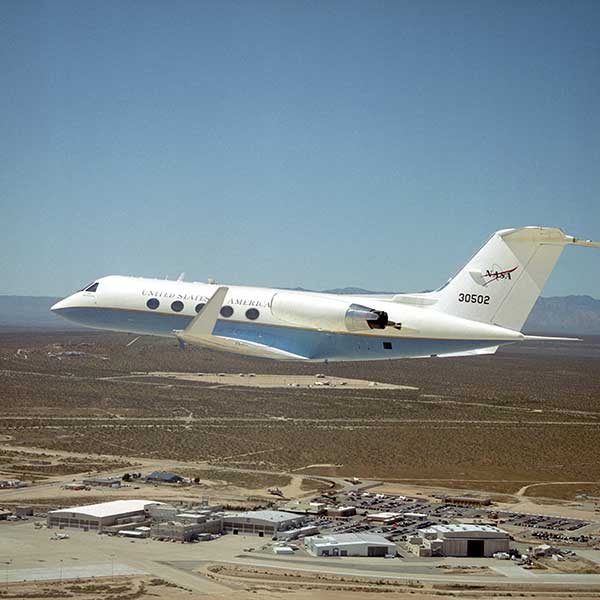
Gulfstream III in flight over NASA Dryden Flight Research Center.
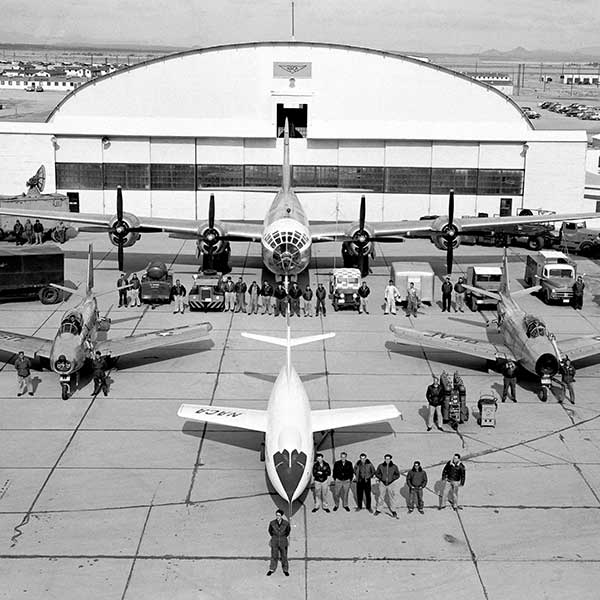
The team that supported the flight of the NACA D-558-II Skyrocket at the High-Speed Flight Station at South Base, Edwards AFB.
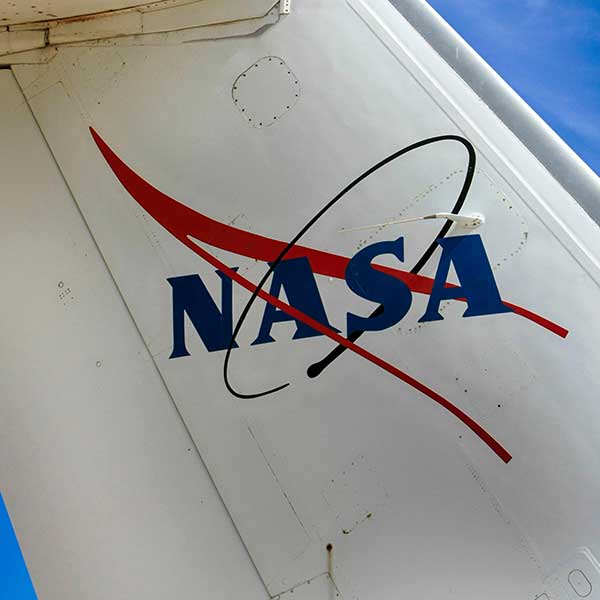
NASA Logo the rudder assembly of a Douglas C9 jet transport plane.
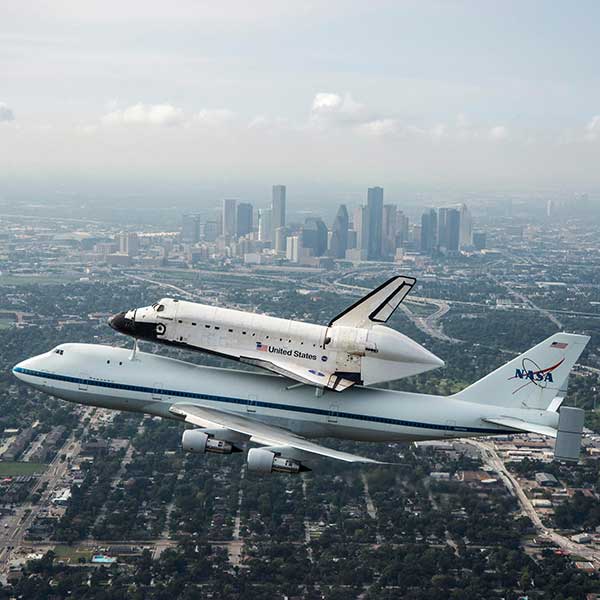
Space Shuttle Endeavour over Houston downtown, on its final ferry flight to Los Angeles.
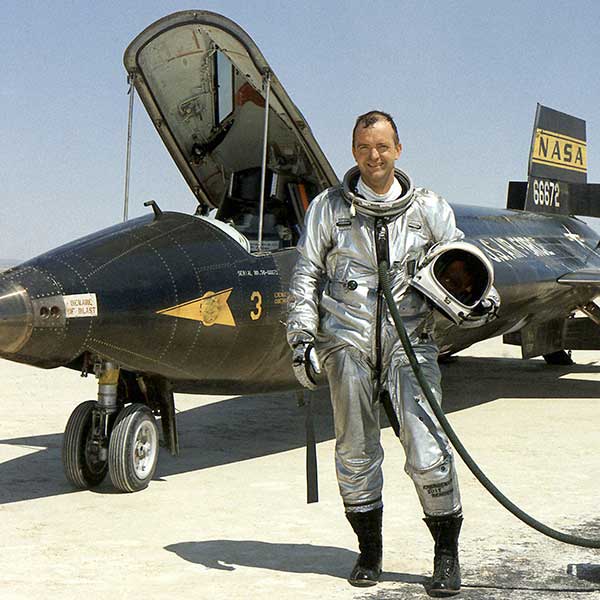
Bill Dana, NASA research pilot, stands with the hypersonic X-15.
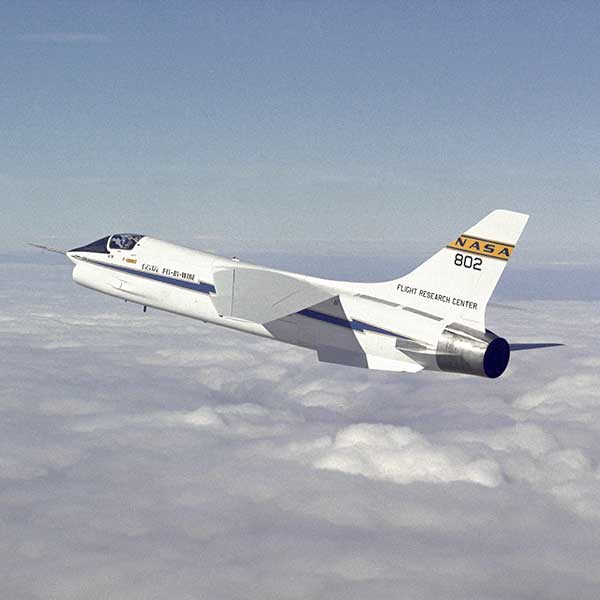
F-8 Digital Fly-By-Wire aircraft in flight on October 27, 1972.
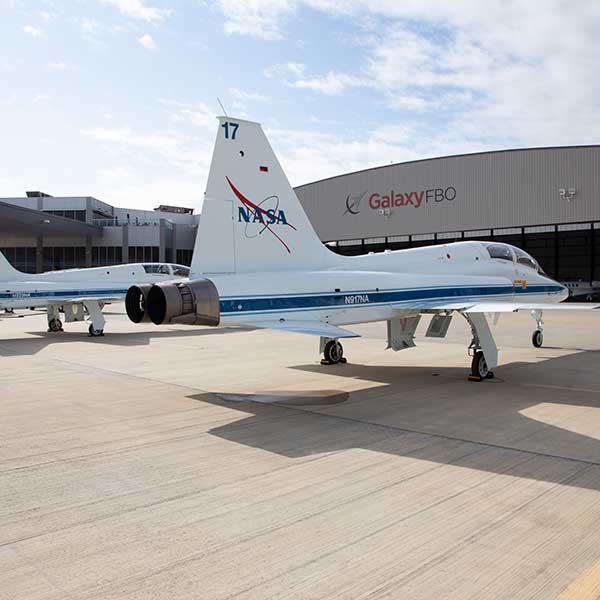
A pair of NASA Northrop T-38 Talons on Galaxy FBO ramp at the Conroe North Houston Regional Airport.
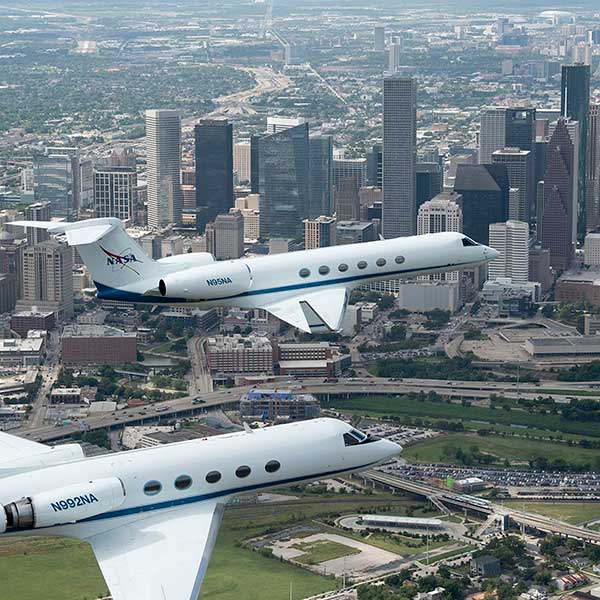
NASA’s Gulfstream III and Gulfstream V fly over downtown Houston on Aug. 28, 2018.
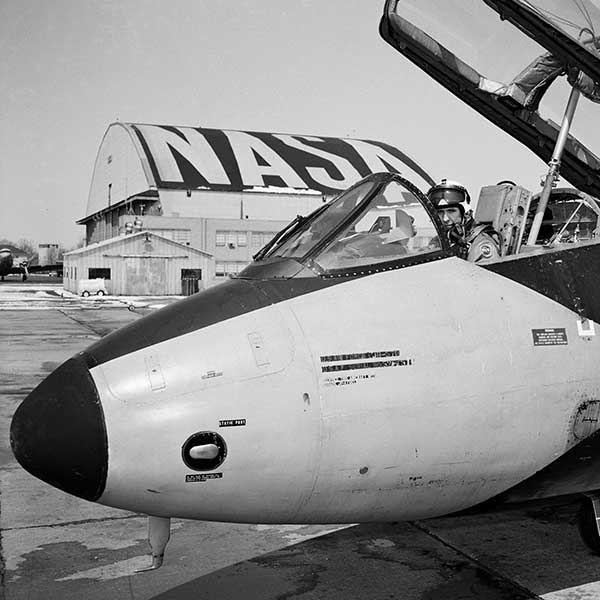
Pilot Earle Boyer and researcher Henry Brandhorst prepare for a solar cell calibration flight in a Martin B-57B Canberra at the National Aeronautics and Space Administration (NASA) Lewis Research Center.
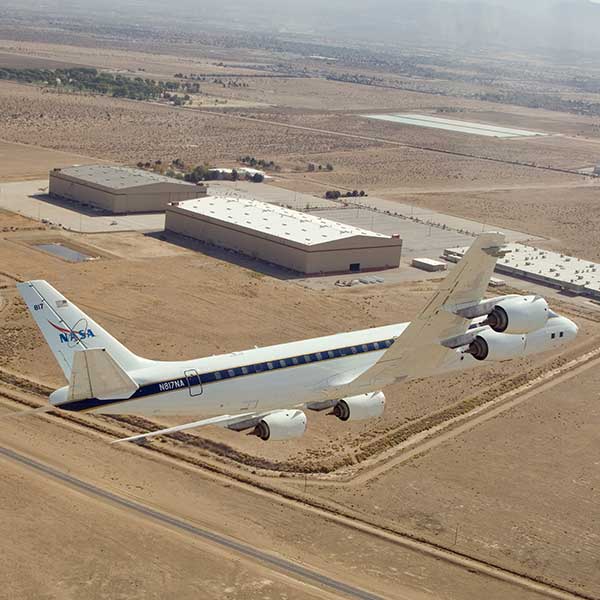
NASA’s DC-8 airborne science laboratory banks low over the Dryden Aircraft Operations Facility at Air Force Plant 42 in Palmdale, California.

The X-38 V-132 research vehicle was released from NASA’s B-52 over the Edwards Air Force Base range in California’s Mojave Desert.
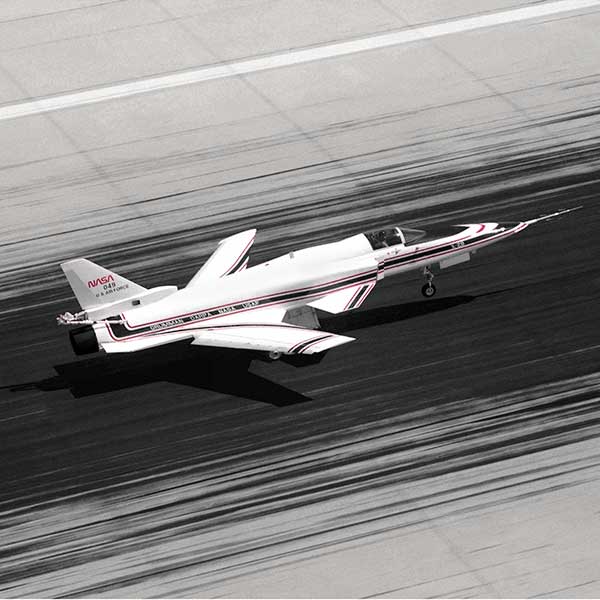
X-29 technology demonstrator aircraft as it lifts off from the runway at Edwards Air Force base on a 1989 test flight.
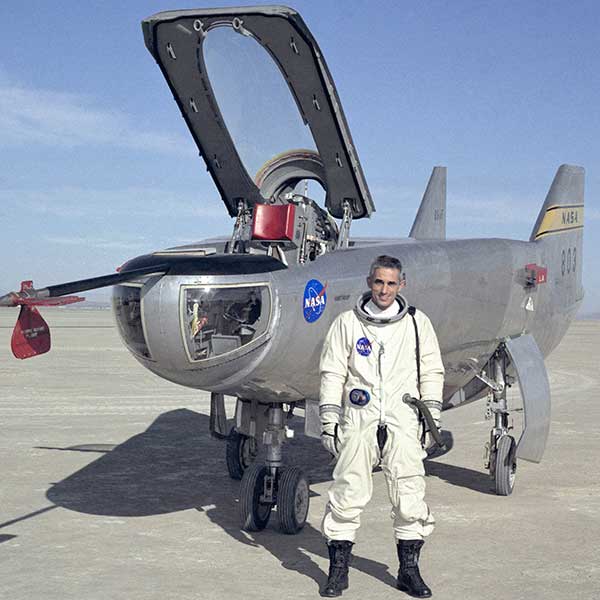
NASA research pilot John A. Manke is seen here in front of the M2-F3 lifting body.
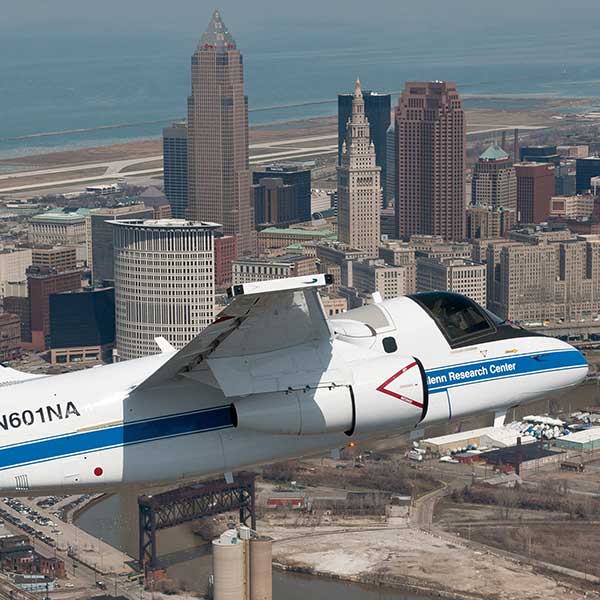
NASA Glenn’s S-3 Viking Aircraft flying over downtown Cleveland, Ohio.
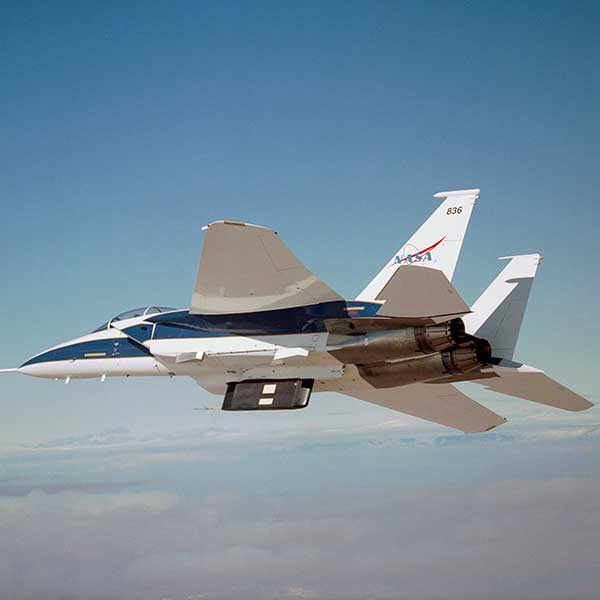
NASA utilized a fleet of McDonnell Douglas F-15 Eagles.
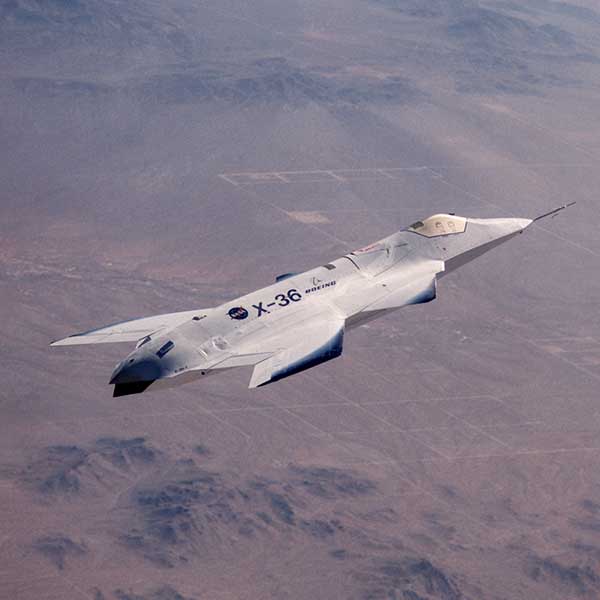
The X-36 technology demonstrator shows off its distinctive shape as the remotely piloted aircraft flies a research mission over the Southern California desert on October 30, 1997.
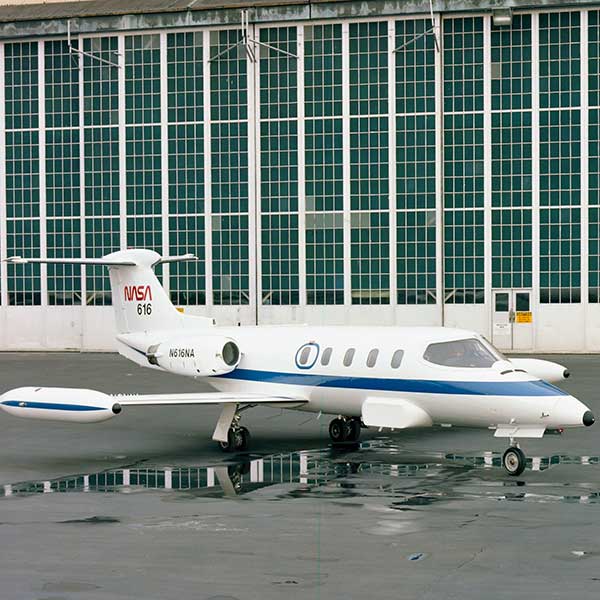
The N616NA Learjet 25 features special fuselage pods to mount various scientific instruments for the NASA Airborne Science Program.
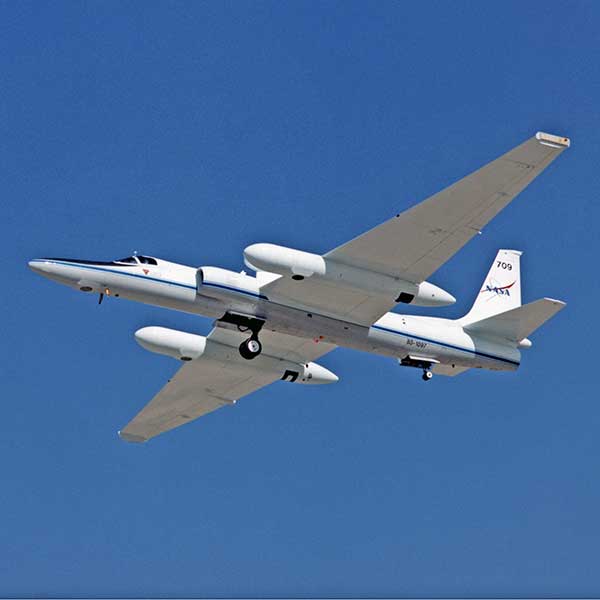
ER-2 tail number 709, is an Airborne Science ER-2s used as science platforms.
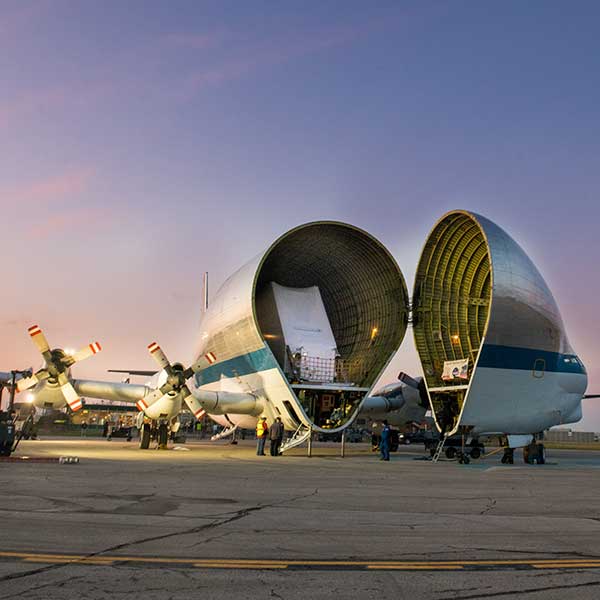
The nose of the Super Guppy Turbine was opened at sunrise on Monday, November 25, 2019 revealing the packaged Orion spacecraft inside.
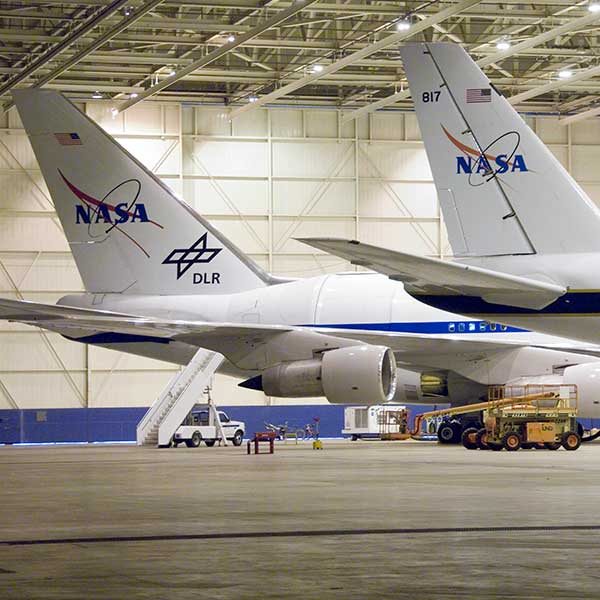
The Stratospheric Observatory for Infrared Astronomy, or SOFIA rests in NASA Armstrong Flight Research Center hangars in Palmdale, California.
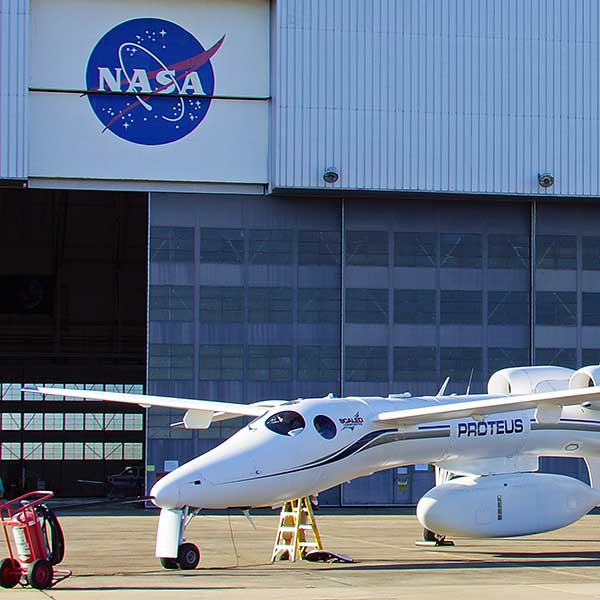
The Proteus is a unique aircraft designed as a high-altitude, long-duration telecommunications relay platform, with potential for use on atmospheric sampling and Earth monitoring science missions as well.
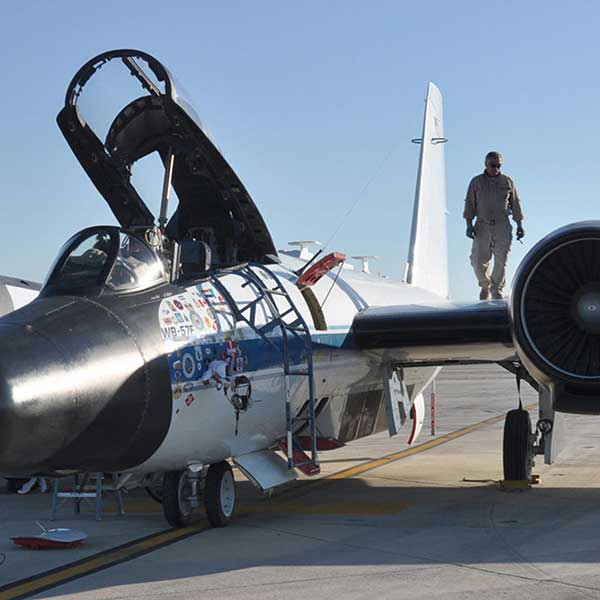
The NASA Johnson Space Center (JSC) in Houston, Texas is the home of the NASA WB-57 High Altitude Research Program.
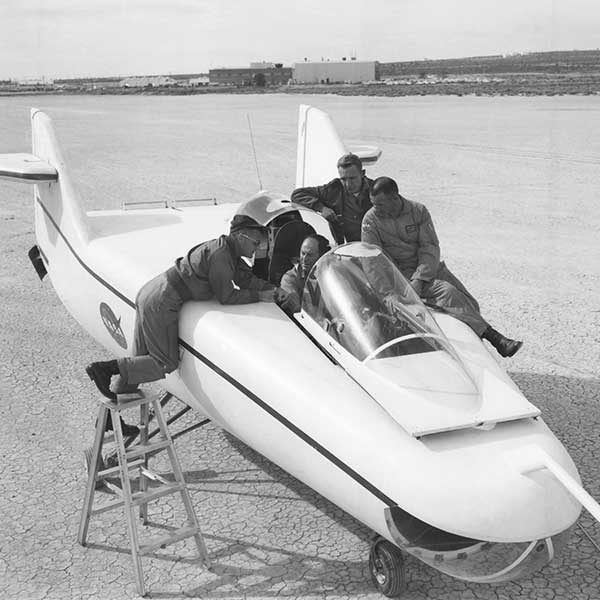
Test pilots Bruce Peterson, Milt Thompson, Don Mallick and Chuck Yeager in the cockpit of the M2-F1.
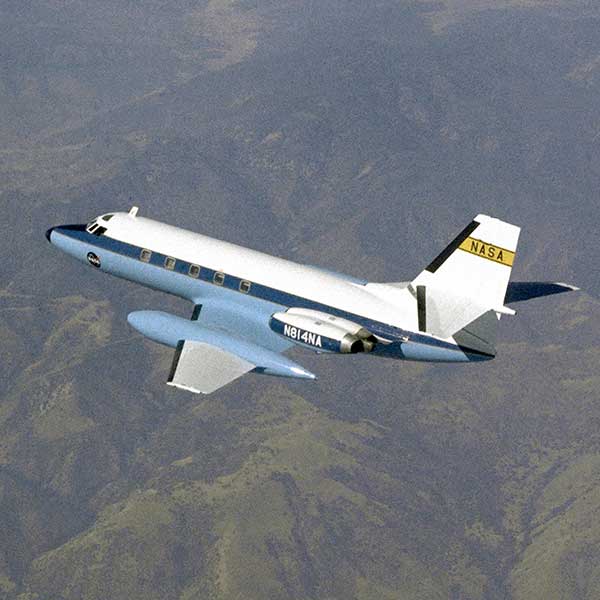
The C-140 JetStar was reconfigured as the General Purpose Airborne Simulator (GPAS) to simulate the flight characteristics of other aircraft.
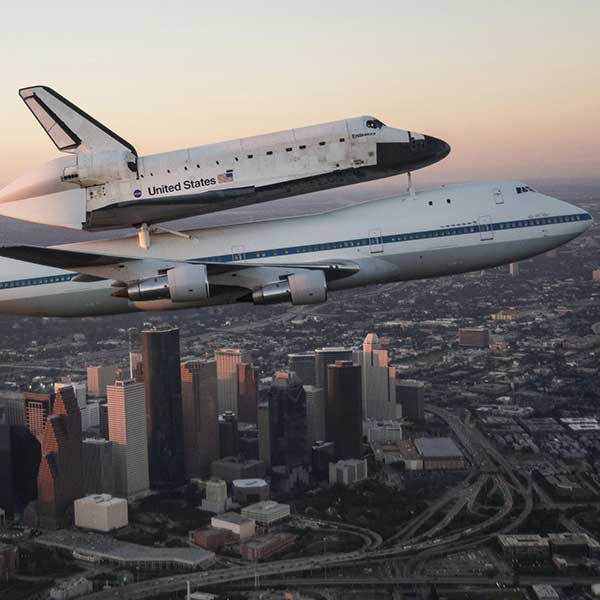
NASA utilized two extensively modified Boeing 747 airliners to transport Space Shuttle orbiters.
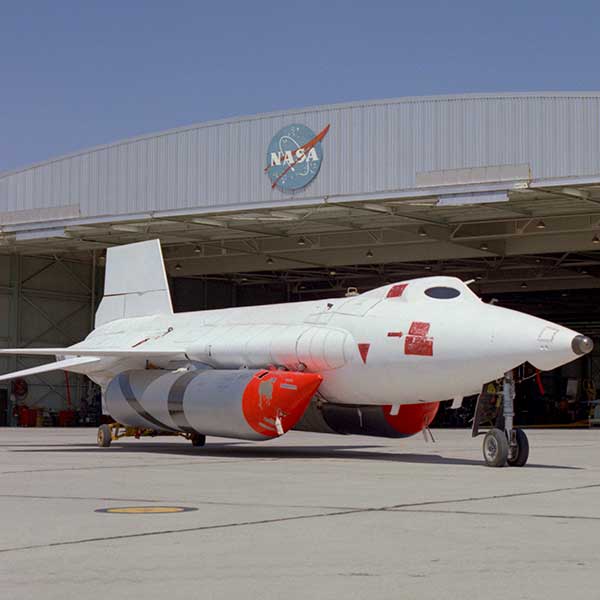
X-15A-2 with full scale ablative and external tanks installed parked in front of hangar.
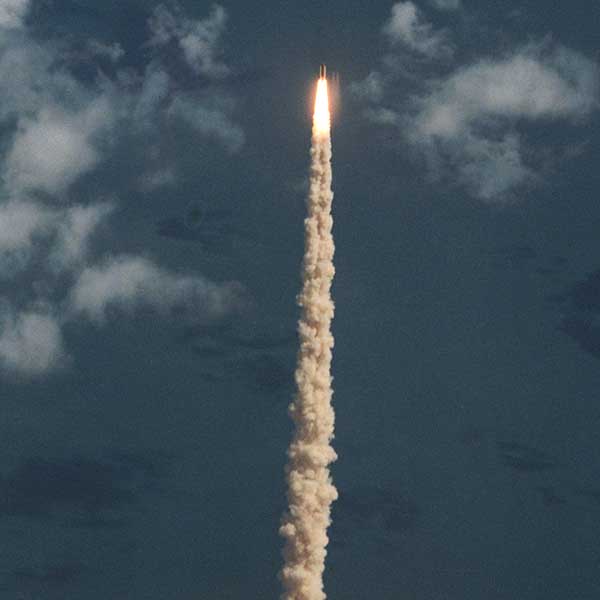
Atlantis, Orbiter Vehicle 104, lifts off from Kennedy Space Center Launch Complex Pad 39B at 12:53:39:983 pm (EDT).
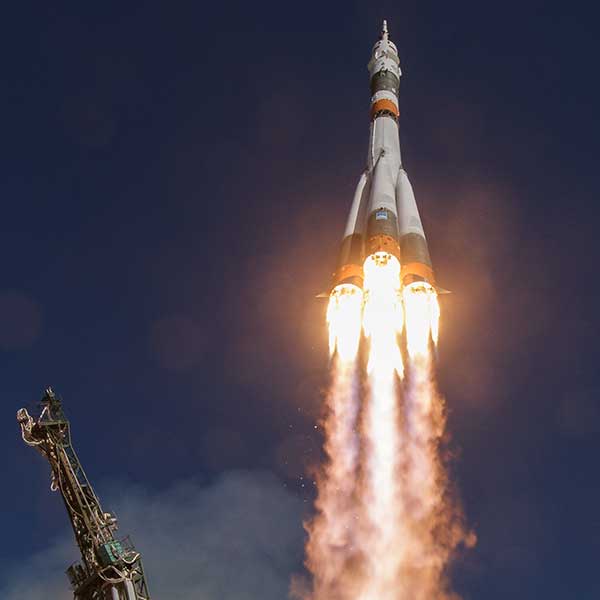
The Soyuz MS-10 spacecraft is launched with Expedition 57 Flight Engineer Nick Hague of NASA and Flight Engineer Alexey Ovchinin of Roscosmos, Thursday, Oct. 11, 2018 at the Baikonur Cosmodrome in Kazakhstan.
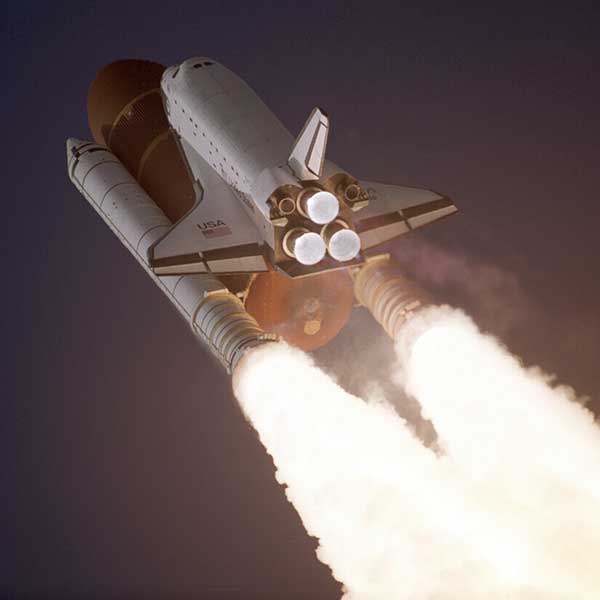
Space Shuttle Atlantis takes flight on its STS-27 mission on Dec. 2, 1988, 9:30 a.m. EST, utilizing 375,000 pounds thrust produced by its three main engines.
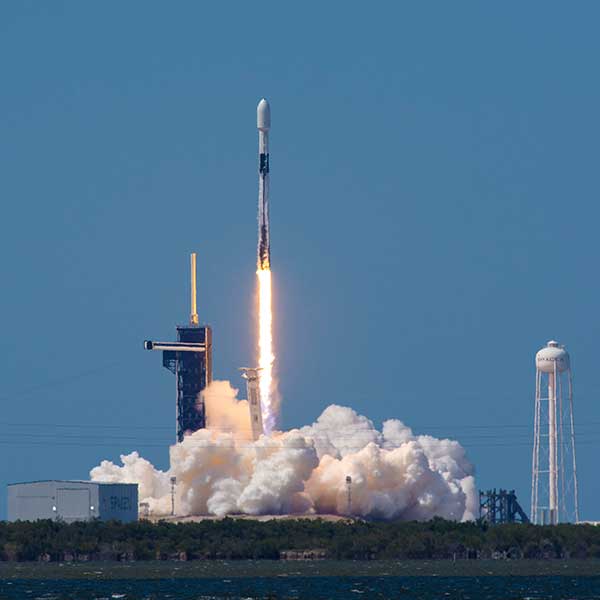
SpaceX launched its seventh Starlink mission. Falcon 9 lifted off from Launch Complex 39A (LC-39A) at NASA’s Kennedy Space Center in Florida on Wednesday, April 22, 2020.
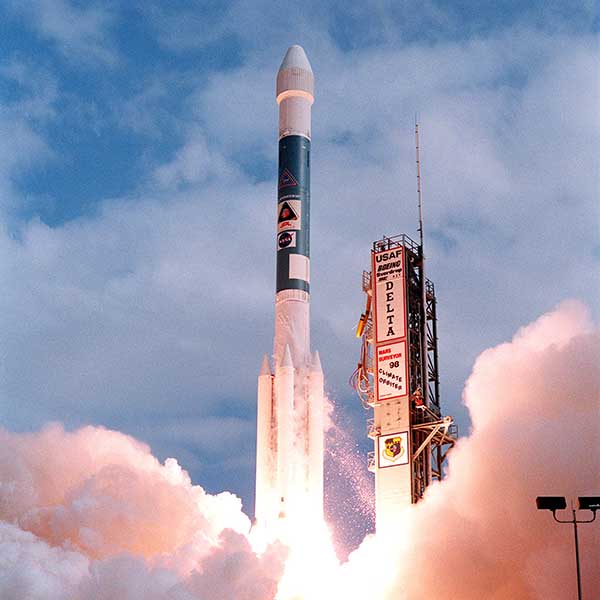
The Mars Surveyor ’98 program is comprised of two spacecraft launched separately, the Mars Climate Orbiter and the Mars Polar Lander.
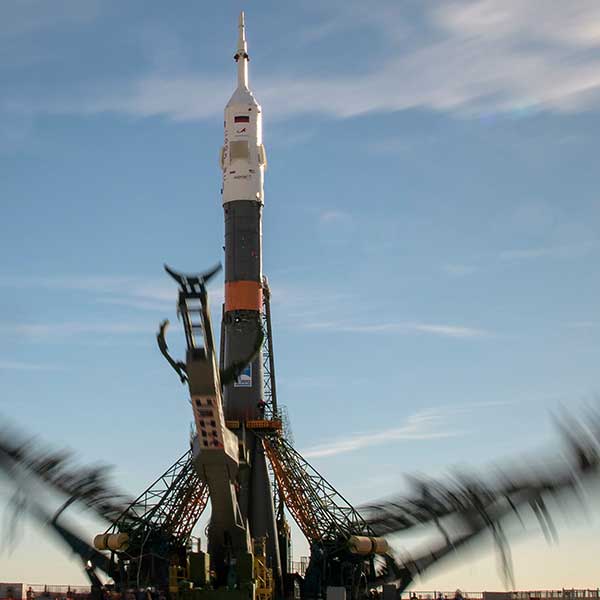
At the Baikonur Cosmodrome in Kazakhstan, launch pad gantry arms are seen closing around the Soyuz rocket in this long exposure photograph, Tuesday, Oct. 9, 2018.
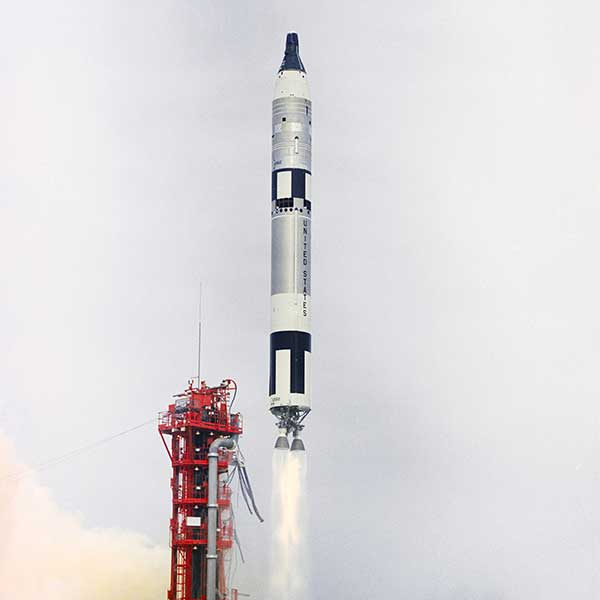
American astronauts Frank Borman and Jim Lovell lifted off from Launch Complex 19, starting the Gemini 7 mission on December 4th, 1965.
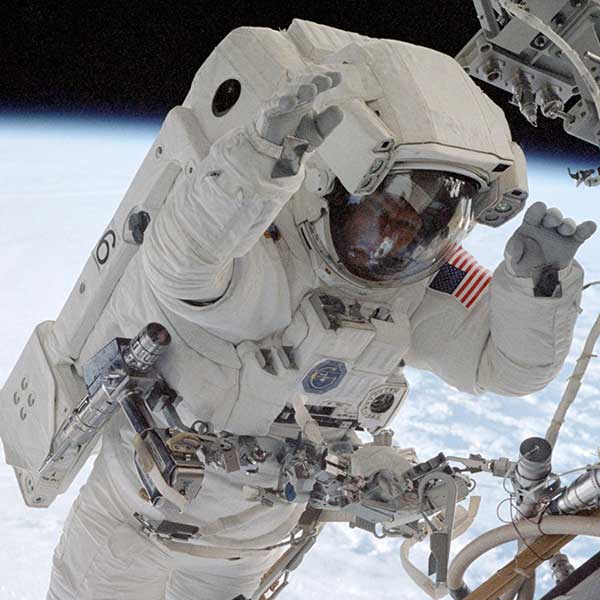
STS-112 Mission specialist Piers Sellers is photographed on the end of the Space Station Remote Manipulator System (SSRMS) arm as he tethers himself to the External TV Camera Group (ETVCG) on the Destiny laboratory module (LAB1/C2-05) of the International Space Station (ISS).
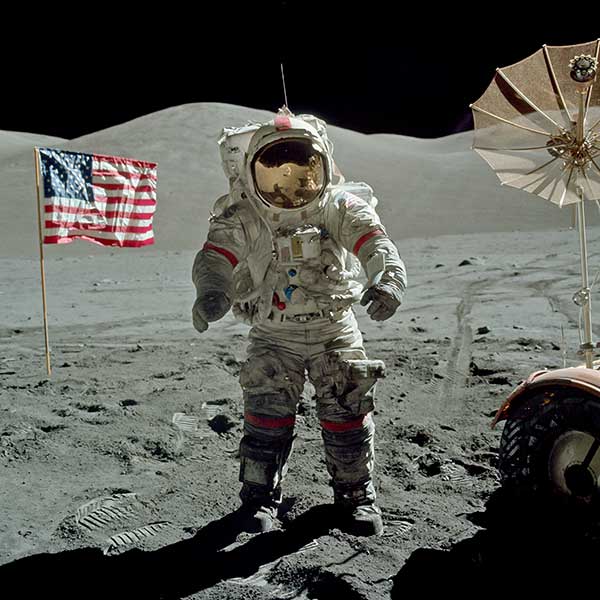
In December of 1972, Apollo 17 astronauts Eugene Cernan and Harrison Schmitt spent about 75 hours on the Moon in the Taurus–Littrow valley.
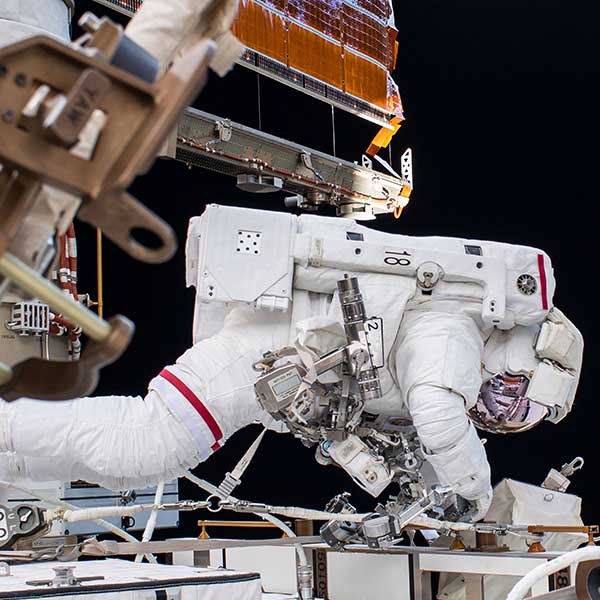
Astronaut Andrew Morgan works while tethered on the International Space Station on October 11, 2019.
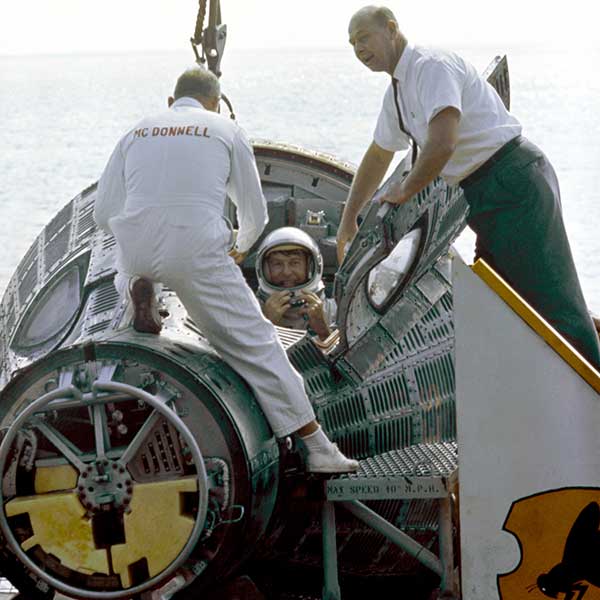
Astronaut Walter H. Schirra Jr. (on right), Command pilot, prepares to remove his helmet and climb from his Gemini VI spacecraft as he and Astronaut Thomas P. Stafford (not in view) arrive aboard the aircraft carrier U.S.S. Wasp.
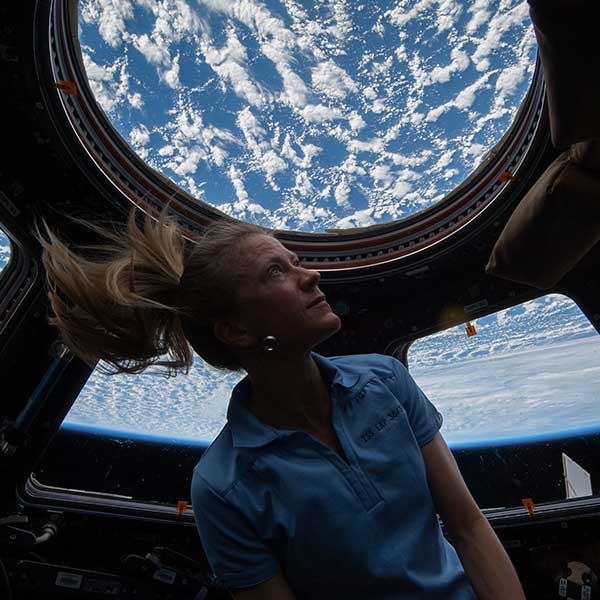
Astronaut Karen Nyberg flew to the space station as a flight engineer for Expedition 36/37.
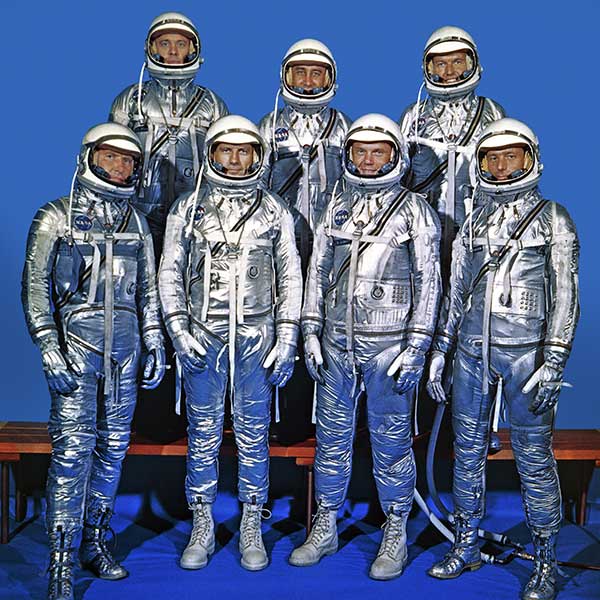
On April 9th, 1959, in Washington D.C., America’s first seven astronauts were announced at a NASA press conference.
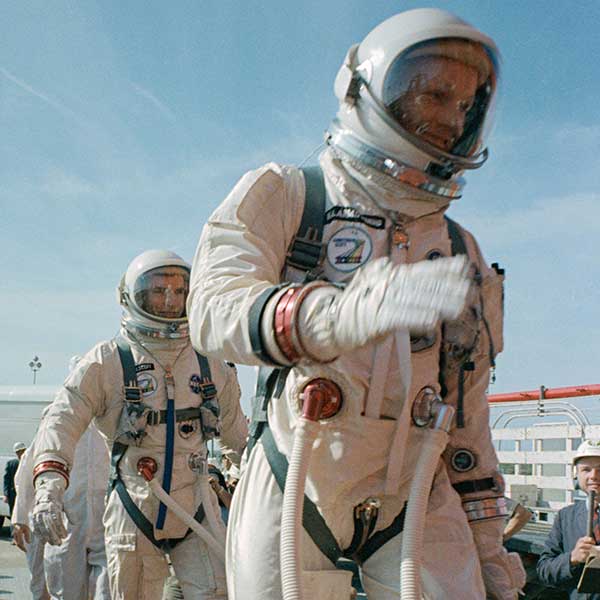
Commander Neil Armstrong (right) and pilot David R. Scott prepare to board the Gemini-Titan VIII.
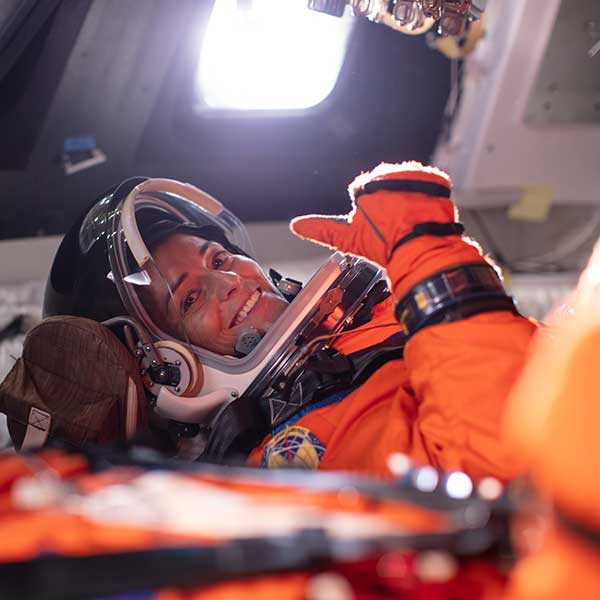
NASA astronaut Nicole Mann gives a thumbs up from inside the Orion mockup, Wednesday, July 10, 2019 at NASA’s Johnson Space Center in Houston, Texas.
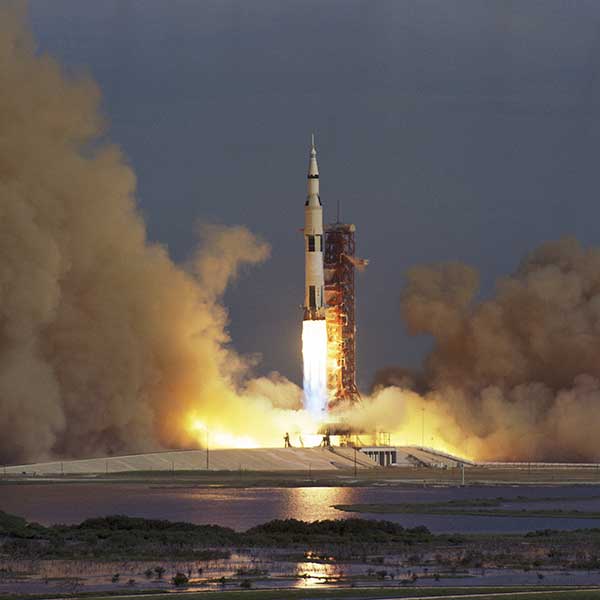
The 363-foot tall Apollo 15 Saturn V is launched from Pad A, Launch Complex 39, Kennedy Space Center, Florida, at 9:34 a.m., July 26, 1971, on a lunar landing mission.
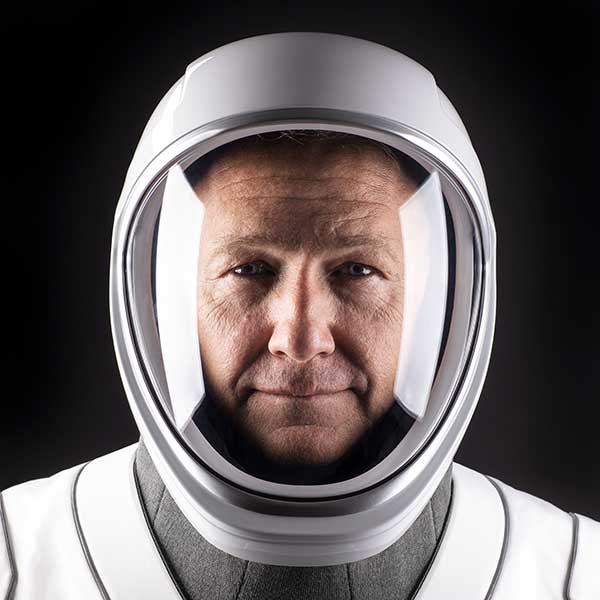
NASA astronauts Doug Hurley, wearing SpaceX spacesuit during a dress rehearsal ahead of the SpaceX uncrewed In-Flight Abort Test.
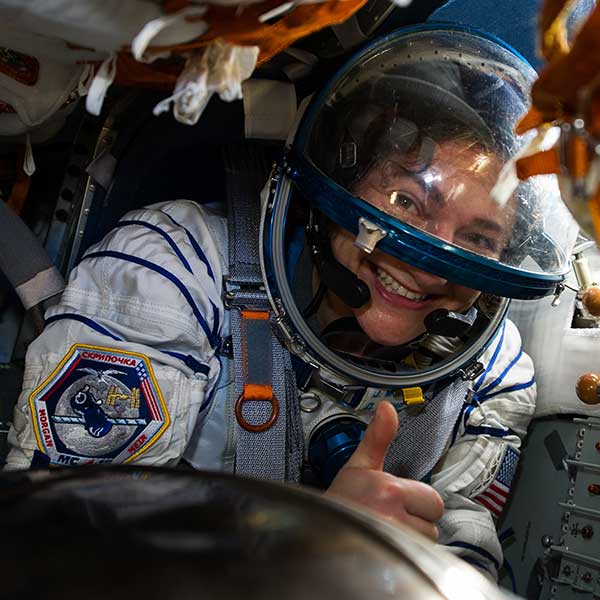
NASA astronaut Jessica Meir gives a thumbs up after she, Roscosmos cosmonaut Oleg Skripochka and NASA astronaut Andrew Morgan landed in their Soyuz MS-15 spacecraft in a remote area near the town of Zhezkazgan, Kazakhstan on Friday, April 17, 2020.
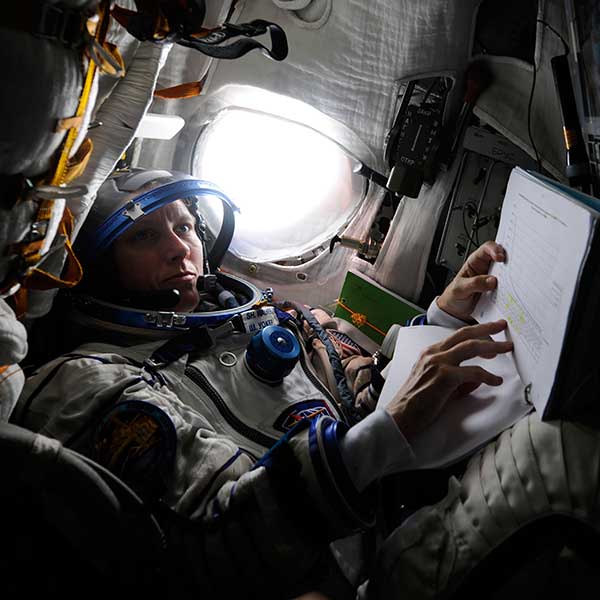
Russian cosmonaut Fyodor Yurchikhin and NASA astronaut Shannon Walker, both Expedition 24 flight engineers, attired in their Russian Sokol launch and entry suits, occupy their seats in the Soyuz TMA-19 spacecraft docked to the International Space Station.
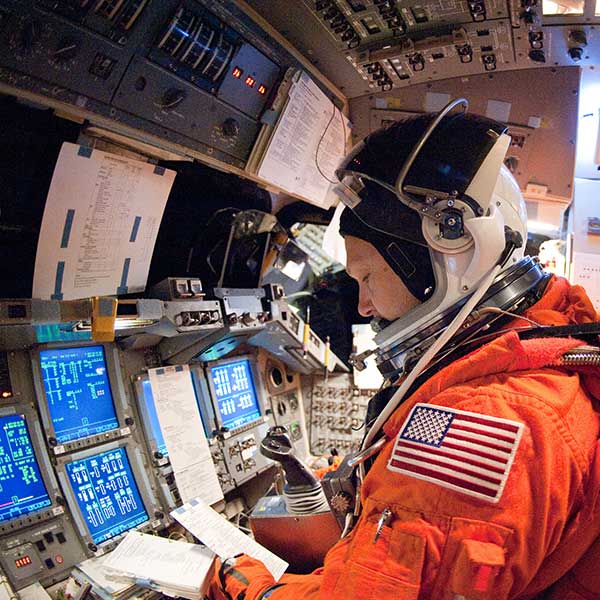
NASA astronaut Doug Hurley, STS-135 pilot, attired in a training version of his shuttle launch and entry suit, participates in a training session in the fixed-base shuttle mission simulator (SMS).
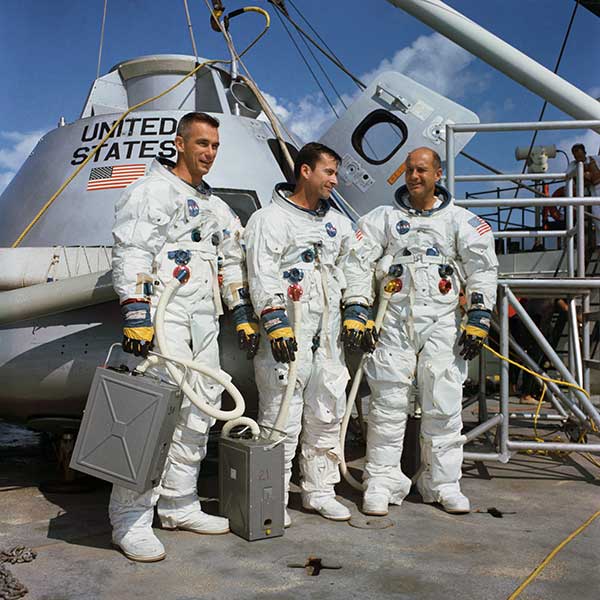
NASA has named these three astronauts as the prime crew of the Apollo 10 space mission.
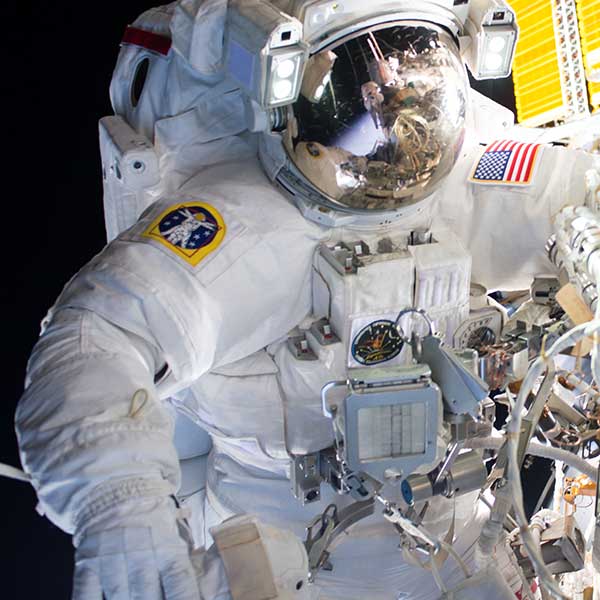
International Space Station Commander Jeff Williams set a new U.S. spaceflight record, passing the 520-day endurance record set for cumulative time spent in orbit.

STS-95 was a Space Shuttle mission launched from Kennedy Space Center, Florida on 29 October 1998, using the orbiter Discovery.

A United Launch Alliance (ULA) Atlas V rocket.

An early morning view of Pad B, Launch Complex 39, Kennedy Space Center, showing the ASTP Apollo/Saturn 1B space vehicle on the pad during Apollo-Soyuz Test Project prelaunch preparations.

Starship MK1 assembled in SpaceX’s build and launch facility in Cameron County, Texas.
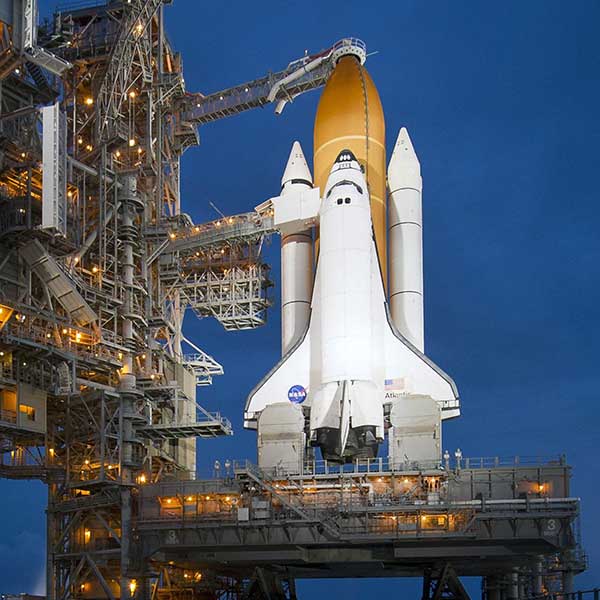
This image of space shuttle Atlantis was taken shortly after the rotating service structure was rolled back at Launch Pad 39A, Thursday, July 7, 2011.